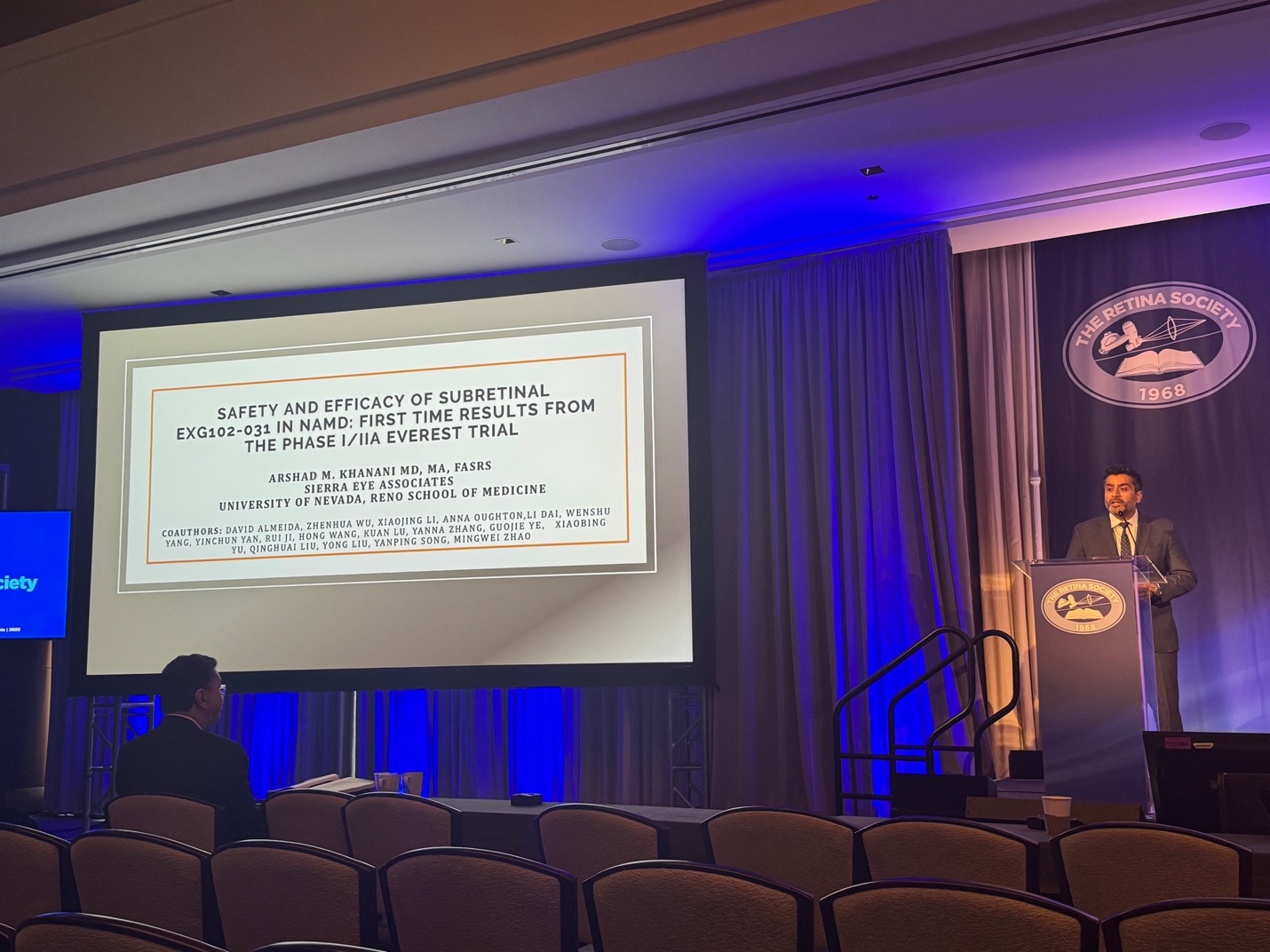Turner D. Wibbelsman, MD
Ophthalmology Resident
Wills Eye Hospital
The Retina Society 58th Annual Scientific Meeting featured two Late Breaking Sessions. On Friday September 12th, the late breaking session involved early-phase results for novel therapeutics for neovascular age-related macular degeneration (nAMD) and central retinal occlusion (CRAO). 
Dr. Arshad Khanani of Sierra Eye Associates presented the first talk, discussing first time results from the Phase I/IIa Everest Trial. The multicenter trial investigated the safety and efficacy of EXG102-031, a novel adeno-associated virus (AAV)-based gene therapeutic vector, for treating nAMD. The therapeutic vector expresses a fusion protein ABD-VEGFR, which binds to angiopoietin 2 as well as all subtypes of VEGF.
The study had a dose-escalation (Phase1) and extension (Phase IIa) design and involved assessing a single subretinal injection of EXG102-031 in patients with nAMD. The primary safety outcomes were the incidence of adverse and serious adverse events. The primary efficacy outcomes were the annualized number of supplemental anti-VEGF injections and change in best corrected visual acuity (BCVA) as well as central subfield thickness (CRT).
In phase I, cohort follow up ranged from 4 to 52 weeks to date; there were no drug related serious adverse events or dose-limiting toxicity. There was dose-dependent reduction in annualized anti-VEGF injection rates (57-96%) across cohorts 1-4 and patients had improved or stable CRT and BCVA.
In summary, the results of the Phase I/IIa Everest Trial demonstrated a favorable safety and efficacy profile of a novel subretinal injection for nAMD. The anti-VEGF injection rate reductions were of particular interest. The durability of the injection rate reduction and long-term safety profile of this new subretinal therapy will be important factors to assess in later phase trials.
—
The second late breaking presentation was delivered by Dr. Richard Rosen of New York Eye and Ear Infirmary of Mount Sinai. The study evaluated a novel intravitreal therapeutic (KUS121) for patients with non-arteritic CRAO. KUS121 is a cytoprotective compound, aimed to reduce metabolic stress from ischemia. The study was a multicenter phase 2 trial.
![]()
There were 17 patients with non-arteritic CRAO presenting 3 to 48 hours from time of symptom onset were included. Patients received an intravitreal injection for three days (two dosage groups and a control sham group). Outcomes included proportion of eyes improving 15 or more ETDRS letters from presentation at Week 12 and safety measures.
There were no statistically significant differences between proportion of eyes achieving the visual acuity outcome between the experimental and control arms. Dr. Rosen did highlight that there was a numerical trend towards improved visual recovery in the patients receiving KUS121 compared to control. The study’s small sample size may be underpowered to detect differences for now. There were no concerning safety signals.
Overall, the authors recommended further evaluation of the drug in later phase trials given the favorable safety profile and trend towards visual improvements. Larger sample sizes and evaluation of patient selection (consider time to symptom onset) may be needed to better understand this novel therapeutic.